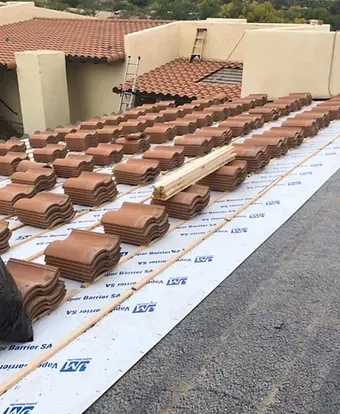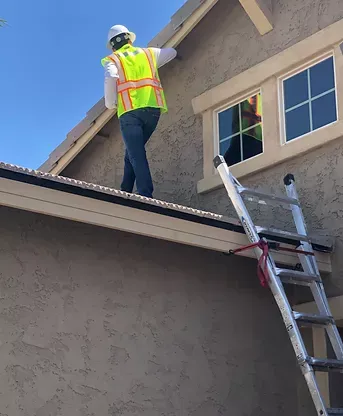How to Prepare Your Roof for Hurricane Season in Florida

Understanding the Importance of Roof Preparation for Hurricane Season
Florida’s hurricane season is a time of heightened vigilance for homeowners, and your roof is your first line of defense against the destructive forces of nature. With the state’s unique geography and warm waters fueling powerful storms, hurricanes can bring torrential rain, high winds, and flying debris that can wreak havoc on your home. Preparing your roof is not just a precaution—it’s a necessity.
Neglecting roof maintenance can lead to severe consequences. Water intrusion from leaks can damage your home’s interior, ruin insulation, and foster mold growth. Structural issues caused by wind damage can compromise the safety of your home, leading to costly repairs or even roof replacement. By taking proactive steps to prepare your roof, you can minimize these risks, protect your investment, and ensure your family’s safety during hurricane season.
Inspecting Your Roof for Damage or Weaknesses
A thorough roof inspection is the foundation of hurricane preparedness. Start by visually examining your roof from the ground using binoculars or climbing up safely if you’re comfortable. Look for loose or missing shingles, cracked tiles, or any signs of wear and tear. Pay close attention to areas around chimneys, vents, and skylights, as these are common spots for leaks.
Don’t forget to inspect the underside of your roof from your attic. Look for water stains, sagging areas, or daylight peeking through, which could indicate vulnerabilities. If you’re unsure about the condition of your roof or spot potential issues, it’s wise to hire a professional roofing contractor. They can perform a detailed assessment, identify hidden problems, and recommend necessary repairs or reinforcements.
Reinforcing Your Roof’s Structure
Strengthening your roof’s structure is a critical step in hurricane preparation. One of the most effective ways to do this is by installing hurricane straps or clips, which secure the roof to the walls of your home. These metal connectors help distribute wind forces more evenly, reducing the risk of your roof being torn off during a storm.
Additionally, ensure that all loose tiles, shingles, or metal panels are securely fastened. High winds can turn these into dangerous projectiles, posing a threat to your home and your neighbors. If your roof has a gable design, consider adding bracing to reinforce the gable ends, as they are particularly vulnerable to wind damage. Taking these measures can significantly enhance your roof’s ability to withstand hurricane-force winds.
Clearing Debris and Maintaining Gutters
Debris on your roof and in your gutters can exacerbate storm damage. Leaves, branches, and dirt can clog your gutters, preventing proper drainage during heavy rains. This can lead to water pooling on your roof, increasing the risk of leaks and structural damage.
Before hurricane season, clear your roof of any debris and trim overhanging tree branches that could break off during a storm. Clean your gutters and downspouts to ensure water flows freely away from your home. Installing gutter guards can help prevent future clogs and reduce maintenance. Regular upkeep of your roof and gutters is a simple yet effective way to protect your home from water damage.
Sealing and Waterproofing Your Roof
Waterproofing your roof is essential to prevent leaks during a hurricane. Applying a high-quality waterproof sealant can create an additional barrier against water intrusion. Focus on areas prone to leaks, such as valleys, flashing, and around chimneys, vents, and skylights.
Inspect the flashing for signs of rust, cracks, or gaps, and reseal or replace it as needed. Flashing is a critical component that directs water away from vulnerable areas, so ensuring it’s in good condition is vital. By taking these steps, you can reduce the likelihood of water damage and extend the lifespan of your roof.
Choosing the Right Roofing Materials for Hurricane Resistance
The materials you choose for your roof can make a significant difference in its ability to withstand a hurricane. Durable options like metal roofing, concrete tiles, and impact-resistant shingles are designed to endure high winds and flying debris.
Metal roofs, for example, are lightweight, long-lasting, and resistant to wind uplift. Concrete tiles are heavy and durable, providing excellent protection against strong winds. Impact-resistant shingles are specifically engineered to resist damage from hail and debris. When selecting roofing materials, consider their wind resistance rating and consult with a roofing professional to determine the best option for your home.
Scheduling Regular Roof Maintenance
Routine maintenance is key to keeping your roof in optimal condition year-round. Schedule regular inspections and cleanings to address minor issues before they become major problems. This is especially important before and after hurricane season, as storms can cause hidden damage that may worsen over time.
Create a maintenance schedule that includes inspecting for damage, cleaning gutters, and checking for signs of wear and tear. By staying proactive, you can ensure your roof remains strong and ready to face the challenges of hurricane season.
Preparing for Emergency Roof Repairs
Even with the best preparation, hurricanes can cause unexpected damage. Having a roof repair kit on hand can help you address minor issues quickly and prevent further damage until professional help arrives.
Your kit should include tarps, nails, adhesive, a hammer, and a utility knife. Use tarps to cover damaged areas and secure them with nails or adhesive to keep water out. While these temporary fixes won’t replace professional repairs, they can buy you valuable time and minimize the impact of storm damage.
Reviewing Your Homeowner’s Insurance Policy
Understanding your homeowner’s insurance coverage is an essential part of hurricane preparedness. Review your policy to ensure it includes coverage for roof damage caused by hurricanes. Pay attention to deductibles, exclusions, and any specific requirements for filing a claim.
Documenting the condition of your roof before hurricane season can streamline the claims process if damage occurs. Take clear photos of your roof from multiple angles and store them in a safe place. This evidence can be invaluable when working with your insurance company to secure compensation for repairs.
Partnering with a Trusted Roofing Professional
Working with a licensed and insured roofing contractor is one of the best investments you can make in your home’s hurricane preparedness. A reputable professional can provide expert inspections, repairs, and upgrades to ensure your roof is ready for the storm season.
When choosing a contractor, look for reviews, certifications, and proof of insurance. Ask for references and verify their credentials with local licensing authorities. Building a relationship with a trusted roofing professional can give you peace of mind and ensure your home is in good hands.
Final Checklist for Roof Hurricane Preparedness
To help you stay organized, here’s a final checklist for preparing your roof for hurricane season:
- Conduct a thorough roof inspection for damage or weaknesses.
- Hire a professional roofing contractor for a detailed assessment if needed.
- Install hurricane straps or clips to reinforce your roof’s structure.
- Secure loose tiles, shingles, or metal panels.
- Clear debris from your roof and gutters.
- Apply a waterproof sealant and check flashing for leaks.
- Consider upgrading to durable, hurricane-resistant roofing materials.
- Schedule regular roof maintenance before and after hurricane season.
- Keep a roof repair kit on hand for emergency fixes.
- Review your homeowner’s insurance policy and document your roof’s condition.
- Partner with a trusted roofing professional for inspections and repairs.
By completing these steps well in advance of hurricane season, you can protect your home, reduce potential damage, and ensure your family’s safety during the storm.




